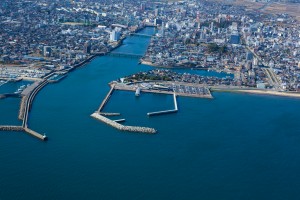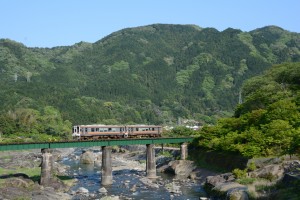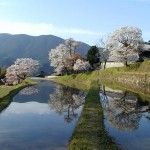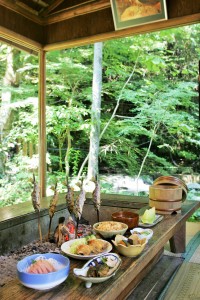(Click pictures to enlarge)
Tsu City is located near the centre of Japan, and is spread over an area of 711 square kilometers (298 miles). The city faces Ise Bay to the east and borders on Nara Prefecture in the west. The climate is mild and the city is surrounded by lush natural scenery. The city is best accessed by regular high-speed boat in just 45 minutes from central and western areas of Japan, as well as from the Centrair international airport to the city port at Nagisamachi. This easy access means Tsu City has its doors open to the world. Historically the area has had an important role with what was a flourishing large scale port called Anotsu. The ancient Chinese history book the Wubei Zhi, also commonly known by its Japanese translated name Bubishi, the most comprehensive military book in Chinese history written 400 years ago describes the port Anotsu as one of the three biggest important ports at the time.
From the Muromachi Era to the Sengoku Era (1392–1573), the Kitabatake family, which included the Lord Chikafusa Kitabatake, a famous historical figure from Japan’s Sengoku Period (the era of warring states) ruled the ancient province of Ise and was based in the Misugi Area, building the new city up during their reign. In the following Edo Era (1603 to 1868), Lord Takatora Todo restored Tsu Castle and built the foundation of Tsu City.
Historically Tsu City was the main waystation for pilgrims travelling to Ise Shrine, the most important shrine of Japan’s native Shinto religion, and dedicated to Amataseru Omikami, the Sun Goddess. Shinto religious texts considered the Emperors of Japan to be Her descendants, stretching through the millennia to the current Emperor. The city has a long standing culture of hosting visitors with such an important shrine located there.
It also boasts an abundance of other tourist sites. The east side of the city is lined with 20 kilometres of beautiful coast and inlets. There are some famous hot springs and visitors can even enjoy the refreshing and soothing forest area which was the location and a popular site after the award winning Japanese comedy ‘Wood Job’ was shot there by Shinobu Yaguchi who also directed the well-known ‘Waterboys’ and ‘Swing Girls.
The city was reborn and grew by the amalgamation of ten of the surrounding local authorities in 2006, which was recently marked by 10th anniversary events and the city is now continuing to grow as a unique and attractive destination.
The Local Meisho Rail Line
A recent local issue is an example of how the city government is working together with residents to support everyday life in the community. One part of the city was without a railway service over a period of six years, after a devastating typhoon hit the region and destroyed some parts of the railway which linked to the rural area of Misugi within Tsu City, but on March the 26th in 2016 the local railway called the Meisho Line came back to life.
The railway company had made the decision that they would not repair the line because there were too few users to maintain it as a viable business. Instead, the company announced they would introduce a bus service to link up the abandoned sections of the line.
Misugi is located on the mountainous side of the city where the local community are continuing to feel the impact of depopulation. People do of course use cars, but students or elderly people relied on the railway to get to the central part of the city and further. The line was an integral part of their life.
Immediately after the decision to close sections of the line, the residents of Misugi started a campaign against the decision. The area’s population was just 5,900 but they collected 116, 000 petitions over three months, which persuaded the local authority to act.
Tsu City and Mie Prefecture started their negotiation with the railway company. After the long negotiation and the repairs, the Meisho railway line resumed its service for people in Misugi, and the line has grown not only as a commuter line but as a tourist route offering a range of attractions to visitors from other areas in Japan and from overseas.
Places to visit along the line
The length of the railway is 43.5 km from the end to another. It takes 80 minutes to complete the whole line. Visitors can really enjoy beautiful scenes of natural heritage during the 80-minute trip.
‘Mitake no Sakura’
Mitake no Sakura is a location with wild cherry blossoms. The avenue was selected in Japan’s top 100 cherry blossoms. The avenue is illuminated by night from 19:00 to 21:00 in early April.
‘Fishing Amago trout’
Amago trout is described as “Queen of the mountain rivers”. People enjoy Amago fishing from the end of March to September every year. There are also some local restaurants that serve the Amago trout as a regional speciality.
‘Kitabatake Park’
The park established by Lord Kitabatake, where ruins of his former dwellings sit, is now preserved as a nationally designated ‘precious cultural heritage site’ surrounded by expansive woods and clear water.
Visitors can enjoy the area throughout the seasons. A free rental bicycle service is also available at Ise Okitsu Station.
Meisho-sen sightseeing site in English (LINK)





